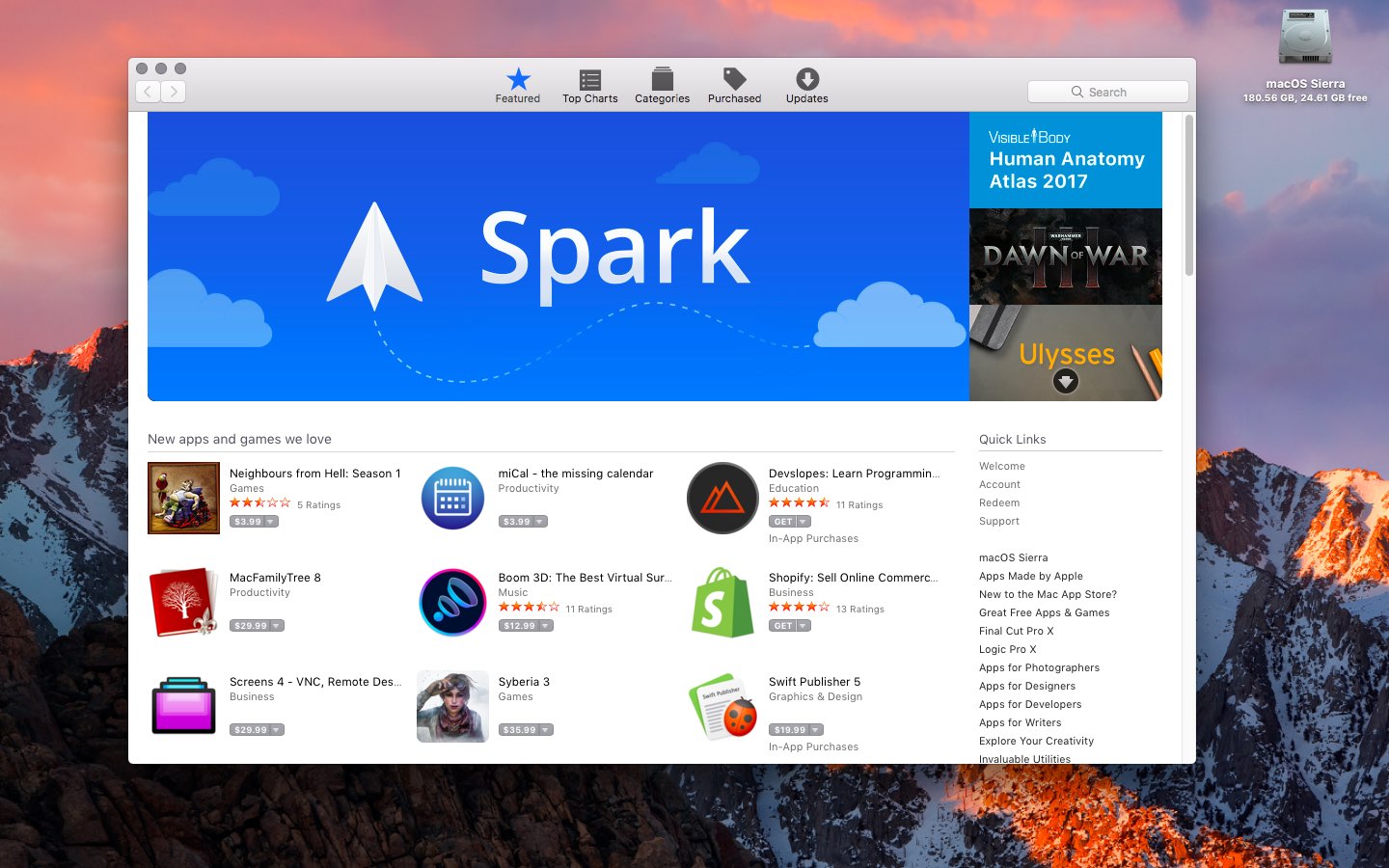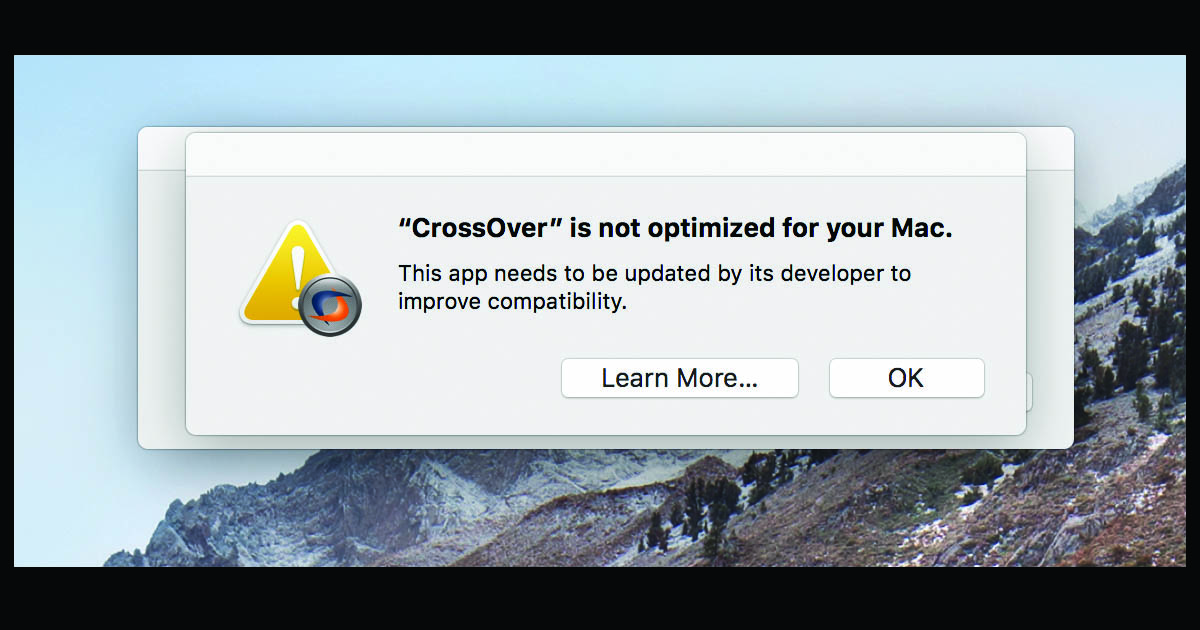- MacOS 10.14 Mojave, the version of the Mac operating system before the new macOS Catalina, is the last version that supports 32-bit software.With Catalina, only 64-bit software will be supported.
- Sep 01, 2019 Check the apps downloaded from Mac App Store, Identified Developer or Unknown categories to easily find the 32-bit apps. You can clearly see the Kind will show as “32-bit (Unsupported) indicating the app will no more work on your Mac.
- 64 bit free download - Apple Mac OS X Snow Leopard, Vuze BitTorrent Client, uTorrent, and many more programs.
- If your 32-bit apps were downloaded from the Mac App Store, it’s likely the developer has pushed a 64-bit upgrade to the store. In that case, all you need to do is update the app as you would normally and it’ll then be compatible with the newer versions of macOS.
- A free (donations accepted) Mac utility called Go64 aims to ease the 64-bit transition by performing a quick scan of your applications and creating an inventory of those where 32-bit code is still.
Jun 05, 2018 Click on About this Mac. Click on System Report. Click on Applications (under Software.) Click on an App. If the 64-bit (Intel) field says No, the app is 32-bit. What do you do if you have 32-bit apps? Check the Mac App Store or developer's webpage for an updated, 64-bit version of the app. If one's available, upgrade. Oct 28, 2019 Apple made Mac OS X Snow Leopard entirely 64-bit in 2009. The first smartphone with a 64-bit chip (Apple A7) was the iPhone 5s in 2014. It's pretty obvious: 64-bit.
Up until now, your Mac supported all the versions of any apps on your machine. You could run an app whether it was 32-bit or 64-bit without any issues on your machine. However, that changes with the macOS 10.15 version.

Onceyou update your Mac to this latest version of the macOS, you’ll nolonger be able to run any apps that use a 32-bit architecture. macOSis ceasing support for all the 32-bit apps and is now moving towardsthe 64-bit-only app environment.
What that means to end-users like you and me is that we need to get our apps upgraded to the 64-bit versions or we’ll lose access to the apps in the latest macOS update. Of course, we understand that not many of you are tech savvy and you may not know whether an app is a 32-bit or 64-bit.
Therefore, we’ve put together this guide that tells you how to find 32-bit apps on your Mac and offers you advice on what you can do with these apps. At the end of the guide, you’ll know how you can run your apps even in the latest macOS update on your Mac.
Use System Report To Find a List Of 32-Bit Apps On Mac
System Report is a super cool utility on your Mac that lets you find out lots of information about the hardware and software elements on your machine. Although its main purpose is not to help you find apps on your Mac, it does help you find all the 32-bit apps sitting on your machine.
Here’show to get to the list of all the 32-bit apps installed on your Mac:
- Click on the Apple logo at the top-left corner of your screen and select About This Mac. On the following screen, click on the button that says System Report beneath your Mac details.
- By default, you’ll be in the Hardware tab in the report utility. Expand the apps list by clicking on Software followed by Applications in the left sidebar.
- You’ll see a list of all the apps installed on your Mac. Scroll right and take a look at the 64-Bit (Intel) column. If it says No for an app, it means the app you’re looking at is a 32-bit app.
Thisway you can easily find out whether an app is 32-bit or 64-bit.
Use Activity Monitor To Find 32-bit Apps On Mac
Another way to find 32-bit apps on your Mac is to use the Activity Monitor tool. The tool does let you find out if an app is 32-bit but the app must be running while you try to find this information. You won’t find any information if the app isn’t running on your Mac.
- Launch the app in question on your Mac but don’t do anything with it. Open Activity Monitor from the Launchpad.
- Right-click on any of the column names (CPU Time, Threads, etc) and select Kind. It’ll add a new column to the right of existing columns.
- The newly added Kind column will tell you whether the app currently running on your Mac is 32-bit or 64-bit.
Bothof the methods described above should help you easily find all the32-bit apps available on your Mac.
What To Do With The 32-Bit Apps?
If you’ve found that some of your apps still use 32-bit architecture, you may want to upgrade them to the 64-bit versions as soon as possible. If you don’t do it, these apps won’t run on macOS 10.15 and later.
Mostdevelopers are aware of this change that Apple has made to macOS andthey may have already released the 64-bit versions of their apps.There are a few ways to check if your existing apps have 64-bitversions available for your Mac.
Update The Apps From The Mac App Store
If your 32-bit apps were downloaded from the Mac App Store, it’s likely the developer has pushed a 64-bit upgrade to the store. In that case, all you need to do is update the app as you would normally and it’ll then be compatible with the newer versions of macOS.

- To upgrade your apps, launch the Mac App Store on your Mac.
- Click on the Updates option at the top to access the update panel.
- If an update is available for your apps, you’ll find an Update button next to them.
- Click on the button and the apps will be upgraded to their newer versions.
Get The Latest Version From The Official Website
Itmay be that the 32-bit app you use on your Mac came from a website onthe Internet. In that case, you may want to check out the officialwebsite for the app to see if a 64-bit update is available.
Simplyhead over to the app website and look for a newer version of the app.If it’s available, download and install it on your machine. Yourexisting app will be updated to the latest version.
Update The App From Within The App
Manyof the apps allow you to get updates from within the app menus. Thisis true for apps like iTunes, Chrome, AppCleaner, among others.
Inmost apps, you can get new updates by clicking on the app name at thetop and selecting Check for updates or a similar option. Ifyou find an update is available, select it to install it on yourmachine.
Conclusion

If you haven’t already done so, go ahead and get all of your 32-bit apps upgraded to the 64-bit versions if you still want these apps to run in the latest macOS versions. Not doing so will make your apps dysfunctional.
The Mac has been shipping with 64-bit processors since before the Intel transition and macOS, née OS X, has supported 64-bit for years. Modern technologies, like Metal, require 64-bit. One day, macOS will as well. Apple hasn't said what day that will be, at least not yet, but it's continuing its long, slow march in that general direction.
At WWDC 2018, Apple noted that macOS Mojave will be the last Mac operating system to support 32-bit apps. By fall of 2019, and possibly sooner, any 32-bit apps still on your Mac will no longer work.
Apple has been notifying Mac users since April 2018. If you open an app on your Mac and get an alert that an app isn't optimized, there are a few things you can do.
What notification will Mac users see?
If you're running macOS 10.13.4 or later, starting April 12 at midnight local time, if and when you launch a 32-bit notification, you'll get a notification that says:
[App] is not optimized for your Mac.
This app needs to be updated by its developer to improve compatibility.
You'll only ever get the notification once — the first time you launch the 32-bit app, and only to let you know the app will, eventually, be outdated.
Will you still be able to run 32-bit apps on macOS?
Absolutely. For now — and until Apple officially announces and implements an end-of-support date or the next Mac operating system launches, whichever comes first.
Is there a way to see any and all 32-bit apps you might have installed on your Mac?
There is, but it's tedious.
- Click on the Apple icon in the Menubar.
- Click on About this Mac.
- Click on System Report.
- Click on Applications (under Software.)
- Click on an App.
- If the 64-bit (Intel) field says No, the app is 32-bit.
What do you do if you have 32-bit apps?
Check the Mac App Store or developer's webpage for an updated, 64-bit version of the app. If one's available, upgrade.
If there's no 64-bit version available, you can send the developer feedback, or you can look for a similar app that does support 64-bit.
When will the 32- to 64-bit transition be complete?
Apple hasn't set that date yet. Hopefully, the company is watching how fast developers are moving and users are updating and, when it does set a date, it'll be one that works for as many people as possible. The only thing we know so far is that Apple has confirmed that macOS 10.14 Mojave wil be the last macOS to support 32-bit apps.
For more information, keep an eye on Apple's knowledge base.
VECTOR | Rene Ritchie
Main
- Video: YouTube
- Podcast: Apple | Overcast | Pocket Casts | RSS
- Column: iMore | RSS
- Social: Twitter | Instagram
We may earn a commission for purchases using our links. Learn more.
Mac Os 64 Bit Apps Free
Magic Keyboard look outFirst 64 Bit Mac Os
Logitech announces the Folio Touch, its keyboard case for the iPad Pro
Mac Os X 64 Bit Apps
Logitech has unveiled the Folio Touch, a keyboard and trackpad case for the iPad Pro that directly competes with Apple's Magic Keyboard.



